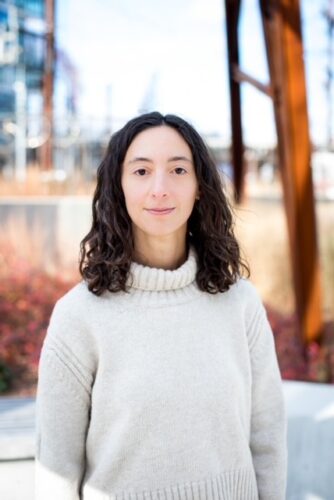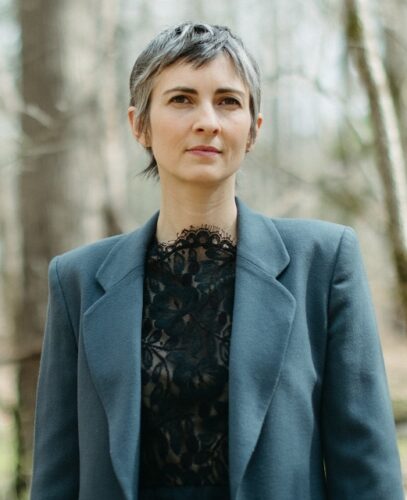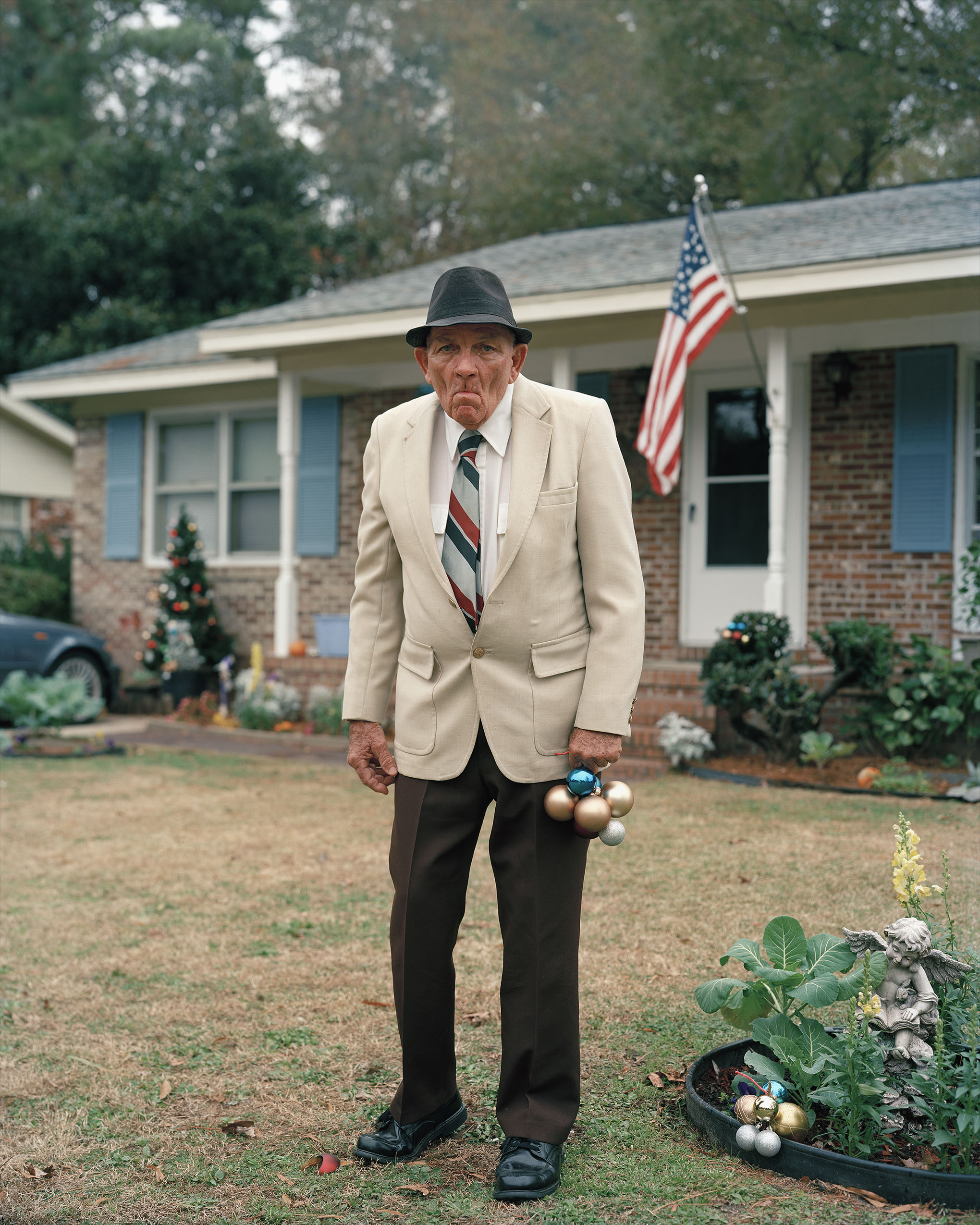Alums Lily Meyer and Sarah Rose Nordgren to Read at UC
8 Minutes Read Time
Managing Editor Lisa Ampleman: This week, the Visiting Writers Series here at UC kicks off the academic year with a reading by two alumni. Doctoral graduates Lily Meyer and Sarah Rose Nordgren will read their work this Thursday, September 5, at 5:30 p.m. in the Elliston Poetry Room on the fourth floor of Langsam Library. The reading is free and open to the public.
I’m honored to have known both writers during their time at UC, and Lily Meyer even worked for the CR in the 2021-22 academic year. I reached out to ask them about their time at UC, their recent work, and more:

Lily Meyer is a translator, critic, and author of the novels Short War (Deep Vellum, 2024) and The End of Romance (Viking, forthcoming). A contributing writer at The Atlantic, she has published translations including Claudia Ulloa Donoso’s story collections Little Bird (Deep Vellum, 2021) and Ice for Martians (Sundial House, 2023). Lily holds a PhD in creative writing from the University of Cincinnati and will be Princeton University’s translator-in-residence in Fall 2024. Her stories and translations can be found in The Dial, The Drift, The Sewanee Review, The Southern Review, and many other journals, and her essays and criticism appear in outlets including Bookforum, NPR Books, The Nation, The New Yorker, and The New York Times Book Review. She lives in Washington, DC.
How did your time at UC affect you as a writer?
I came to UC hoping for writing mentorship, and I found it. Chris Bachelder, Michael Griffith, and Leah Stewart all helped me immensely in writing Short War, which I was massively struggling with beforehand. I wrote the ending as a direct result of an assignment in one of Michael’s classes—and, I should say, I wouldn’t have come up with it had he not, in a totally unrelated context, given me the idea of leaving a story “through the side door,” as he puts it—and I fixed the book’s structural problems as a direct result of Leah Stewart’s novel workshop. Leah also supervised my dissertation, which became my second novel, The End of Romance, and talking it through with her helped me on every possible level. She saved me from a truly ruinous plot mistake that I probably would have wasted a year on if it weren’t for her.
Your novel Short War takes place in different time periods as well as different places in South America. What were the easiest parts of writing the book, and what were the challenges (if any) in the writing process?
I did a lot of research for Short War, and that was easy! I studied history in undergrad, and I love love love to dig around in the past. What was difficult was taming my research impulse and balancing my desire to include rich historical detail with my knowledge that not everyone comes to novels for historical and political education (although some do! One of the MFA-PhD truisms I disagree with most strongly is the idea that literary work shouldn’t or can’t teach its readers. I’ve learned history and geopolitics from John le Carré, Roberto Bolaño, Elena Ferrante, and so many more great literary writers).
What kinds of things have been feeding your creative side lately (books, TV, film, natural spaces, people, etc.)?
I’m working on a new novel set in the New York art world after World War II, so art! I’m looking at a lot of abstract expressionist paintings, mainly in exhibition catalogues I buy on eBay. (eBay feeds my creative life in many ways.) I’m also reading Edith Wharton for the first time, which is inspiring me but also making me furious on two levels: first, that I’d never read her before, and second, that I can’t be her. Rude.

Sarah Rose Nordgren is a poet, writer, and cultural organizer. She is the author of two award-winning poetry collections, Best Bones (University of Pittsburgh, 2014) and Darwin’s Mother (University of Pittsburgh, 2017); the creative nonfiction book Feathers: A Bird-Hat Wearer’s Journal, winner of the Essay Press Book Prize (Essay Press, 2024); and the prose chapbook The Creation Museum (Harbor Editions, 2022). Her poems and essays have appeared in American Poetry Review, The Kenyon Review, Ploughshares, and Narrative, and have been featured by PBS Newshour, The Slowdown podcast, Poetry Society of America, and Poetry Daily. She lives in her hometown of Durham, North Carolina, where she is the founding director of The School for Living Futures, an interdisciplinary, experimental organization dedicated to creating new knowledge and possibility for our climate-changed future.
How did your time at UC affect you as a writer?
I feel lucky to have been part of a poetry cohort with two amazing poets—Emily Skaja and Caitlin Doyle—with whom I became close during my time at UC. We got along splendidly and appreciated each other’s interests and styles while our work was quite different from one another’s. Even though I was in my thirties with a second book coming out when I started the doctoral program, there was something about seeing my poet-self through their eyes and through the contrasts between us that helped me understand my own style and way of thinking more deeply.
Also, through taking courses with Beth Ash and Lisa Hogeland for the graduate certificate in Women’s, Gender, and Sexuality Studies, I was able to both indulge and challenge my interests in theory, history, and politics alongside literary study, helping me to establish a firmer foundation of knowledge on topics that had always interested me as a poet. It was actually in courses with Dr. Hogeland and Dr. Ash that I first pursued the research that eventually became Feathers: A Bird-Hat Wearer’s Journal.
Your most recent books (Feathers: A Bird-Hat Wearer’s Journal and The Creation Museum) pull from various genres in their composition—what advice do you have for those starting hybrid projects?
My advice would be to throw out, as much as possible, your ideas about what a poem or an essay or a book (or whatever form you’re most used to working in) looks like, and let the thing surprise you. For me, working with hybrid forms can feel more like collage in the sense that I’m drawing unexpected, nonlinear connections between different elements through spatial juxtaposition, or sometimes it can feel more like composing a symphony (or what I imagine that would be like) because I’m bringing different “instruments” in for different feelings and effects, as well as using silence when needed, often through image. There’s a quotation from an interview Claudia Rankine did with BOMB magazine about the images in her book Citizen where she says, “I was attracted to images engaged in conversation with an incoherence [. . .] in the world. They were placed in the text where I thought silence was needed, but I wasn’t interested in making the silence feel empty or effortless the way a blank page would.” I thought a lot about how to create full, effortful silences in Feathers. I think it also helps if you’re obsessively interested in the subject matter. For me, the creation/writing process is almost like a record of my research process—I’m driven to pursue a particular idea or constellation of ideas from every possible angle, and those angles necessitate different formal approaches.
What kinds of things have been feeding your creative side lately (books, TV, film, natural spaces, people, etc.)?
For the past few years I’ve been deeply engaged in intersections between art and ecology/climate work, and artists and thinkers who are making and feeling and doing work that decenters human perspectives, reimagines human relationships with the rest of the living world, and engages with the deep feelings of loss, grief, confusion, and anger that many of us are experiencing in this time of ecological crisis. There is so much beautiful, important work being done along these lines right now, but some of my favorite people whose work has been inspiring me are Dougald Hine, Bayo Akomolafe, and Vanessa Andreotti, as well as projects such as the Dark Mountain Project and Brian Eno’s “Hard Art” collective. I’ve also been deeply inspired recently by the people I know working locally here in the piedmont region of North Carolina on Climate Justice and Rights of Nature efforts, as well as those who are thinking creatively about how to integrate the arts into climate-movement work more deeply. I had the wonderful experience of participating in a five-day artist residency with the NC Climate Justice Collective this summer, and the wide diversity and radically welcoming spirit of the people I met there give me hope.
